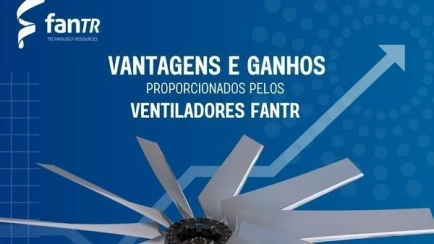
Advantages and benefits provided by FanTR Fans



The end customer often does not understand the fundamental role that the fan plays in industrial processes, such as in a cooling tower or an air cooling system. For him/her, as long as the fan is operating safely, there is no problem. However, when the customer begins to better understand the importance of the fan and its role in the process, it becomes evident the need to invest in quality equipment to guarantee the efficiency and reliability of the system.
If the customer has an efficient fan at hand that enables these direct gains, such as the increase in performance that is characterized by a direct gain, those who benefit are the process areas and plant operations. But some customers particularly value the indirect gains, such as the reduction in maintenance, as some of our fans have been operating for 10 years without the need for intervention. On the other hand, previous fans needed preventive maintenance every three years to change parts or even the complete fan to avoid failures. We have cases of fans that have been operating for 23 years in some plants, which underscores the durability of our products.
If the maintenance team has the responsibility to keep the plant operating as efficiently as possible, then they must not have to spend time and resources dealing with problems in the fan drive system. If that part of the process is working reliably, they can focus on other areas that need their specialist attention. This ensures that time and resources are allocated most efficiently and that the team can focus on other important areas that require their expertise.
Another indirect gain is the FanTR fan construction process. This process is one of the reasons behind the performance increase, and it brings a lightness to the set itself. The construction of our fan is designed in such a way as to add less mass to the system, thus allowing it to use less material in the manufacture of the fan, always aiming not to compromise its robustness. This means that the fan can operate with the same aerodynamic loads it will be subjected to, but with a smaller mass at the drive shaft end.
Today, one of the biggest challenges for the maintenance of a Cooling Tower is the reducers. The motor rotates at a speed of 1800 RPM, but a twenty-foot fan cannot rotate at that same speed, otherwise, the fan blades would be damaged. In this way, a speed reducer is added to the drive, which is a device to reduce speed, allowing the fan to work properly.
Such equipment is often a source of problems, as the fan subjects it to significant axial and radial loads. The FanTR fan, as it is lighter and has an optimized aerodynamic profile, offers significant gains in this regard, reducing the number of maintenance actions required on the gear unit. Furthermore, its construction with less mass does not compromise its robustness and capacity to operate with the same dynamic loads.
It is not only important to understand the customer's needs, but also to recognize that it is not always a matter of performance gains or energy savings, especially if the price per kWh is low. For many, the indirect gain, such as the reduction of equipment interventions and the increase in system operability, is what matters most. In some cases, these indirect gains may be even more significant than the direct ones, such as the reduction in specific HH for this type of equipment.
In summary, the idea of FanTR's work here in Brazil and South America, which is now being applied in other markets in North America and the Middle East, is to bring all the benefits, whether direct or indirect, to our customers.
Share your questions and ideas with us by contacting us below.